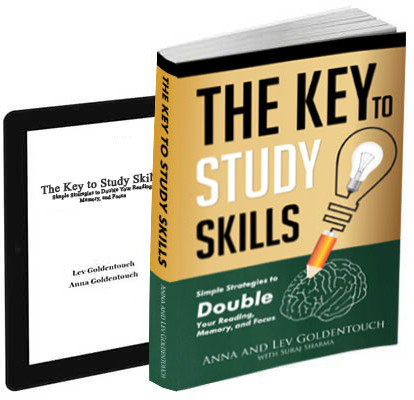Knowledge transfer, the process of applying insights from one field to solve problems in another, is the backbone of innovation. It has powered some of the greatest breakthroughs in history, from Archimedes’ Eureka moment to the development of artificial intelligence in medicine. For polymaths, individuals skilled in multiple disciplines, the ability to transfer knowledge is second nature. In “Anyone Can Train to Become a Polymath” by Dr. Lev Goldentouch and Prof. Anna Goldentouch, the concept of knowledge transfer is explored in depth.
This process not only allows individuals to connect ideas from various fields but also accelerates creative breakthroughs, propelling industries forward. While knowledge transfer can be a complex cognitive process, it holds the potential to reshape entire industries. Embracing a polymathic approach to learning and problem-solving fosters innovation, helping individuals and organizations create impactful solutions that wouldn’t emerge through a single-disciplinary focus.
The Role of General Knowledge and Eureka Moments
Eureka moments, where profound insights arise unexpectedly, often emerge when general knowledge is applied in novel ways. These moments are not the result of deep specialization but come from connecting everyday experiences with complex scientific principles. For example, Archimedes’ principle of buoyancy was discovered while he was taking a bath, and Newton formulated his theory of gravity after observing an apple fall from a tree. These moments illustrate the power of general knowledge in sparking new ideas and breakthroughs, showcasing that sometimes the simplest observations lead to the most profound discoveries.
The Mechanics of Knowledge Transfer
While Eureka moments can occur spontaneously, knowledge transfer itself is a complex process that requires pattern recognition. The brain excels at applying mental models from one domain to solve problems in another, like using fractal mathematics to model both particle motion and financial markets. Successful knowledge transfer involves identifying patterns across disciplines—this means drawing on concepts and methods from different fields to solve problems in new contexts. Such interdisciplinary thinking enables individuals to find innovative solutions that would be impossible through the lens of a single domain.
Overcoming Barriers to Knowledge Transfer
Despite its potential, knowledge transfer is often blocked by various barriers. One of the primary challenges is psychological resistance to new ideas. When knowledge contradicts established beliefs or long-standing paradigms, individuals may reject it rather than embrace it. Historical examples, such as Ignaz Semmelweis’ discovery of handwashing to reduce infections, show how groundbreaking ideas are often initially dismissed due to entrenched thinking. Furthermore, the lack of a common language between different disciplines can make communication difficult, as specialized terminology and concepts are not easily understood outside of their original context. Overcoming these barriers requires fostering open-mindedness, clear communication, and a willingness to embrace new perspectives.
The Stress of Breakthroughs
While breakthroughs are often exhilarating, they can also come at a significant emotional and mental cost. The process of knowledge transfer can lead to cognitive fatigue, anxiety, and social isolation, especially when innovators face resistance from peers or society. The uncertainty inherent in waiting for a breakthrough to materialize can exacerbate stress, as seen in the struggles of many pioneering thinkers throughout history. Despite these challenges, the rewards of innovation and discovery often make the stress worthwhile. For those who persist, knowledge transfer becomes a pathway to transformative change, both personally and within the broader scientific or creative community.
Productive Procrastination and Moonlighting Projects
Some of the most remarkable discoveries happen when individuals step away from their main work to engage in seemingly unrelated or unstructured activities. This concept of productive procrastination allows ideas to incubate in the subconscious mind, leading to breakthroughs when least expected. Famous discoveries, like Alexander Fleming’s accidental discovery of penicillin, demonstrate how allowing space for curiosity and exploration can lead to life-changing innovations. Similarly, moonlighting projects—where individuals pursue side projects outside of their professional duties—often give them the freedom to explore unconventional ideas. Albert Einstein’s development of the theory of relativity during his time as a patent clerk is a prime example of how moonlighting can result in groundbreaking discoveries.
Balancing General Knowledge with Expertise
Successful knowledge transfer requires a balance between general knowledge and specialized expertise. General knowledge offers the ability to see connections across domains, while specialized expertise allows for deep problem-solving within a given field. Polymaths, individuals who excel in multiple domains, are particularly skilled at transferring knowledge across disciplines. They can draw on their broad knowledge base while leveraging their expertise in specific areas to solve complex problems. The key to success lies in knowing when to apply general knowledge and when to dive deep into specialized expertise, as both are essential for achieving true innovation.
Interdisciplinary Integration: A Modern Necessity
In today’s rapidly evolving world, many of the most exciting breakthroughs are the result of interdisciplinary collaboration. By combining expertise from diverse fields, teams can solve complex problems that would be impossible for a single discipline. For example, the integration of artificial intelligence with healthcare research has led to breakthroughs in diagnostic tools and treatment strategies. While interdisciplinary work is essential, it often presents challenges in terms of communication and collaboration. To overcome these challenges, teams must adopt clear communication strategies, regular cross-functional meetings, and well-documented processes to ensure that ideas are effectively integrated across disciplines.
The Role of Mental Templates in Knowledge Transfer
Mental templates are cognitive frameworks that help individuals apply knowledge from one domain to another. These templates allow polymaths to make connections between seemingly unrelated ideas and solve complex problems. While mental templates are often subconscious and difficult to articulate, they play a crucial role in knowledge transfer. They can take many forms, from visual representations to mathematical operations, and are a key tool for fostering creativity. Recognizing and refining these templates can enhance one’s ability to transfer knowledge effectively and make breakthrough discoveries in diverse fields.
Encouraging Knowledge Transfer in Professional and Academic Settings
To encourage knowledge transfer, individuals and organizations must create environments that support curiosity, collaboration, and experimentation. This includes promoting intellectual curiosity, providing opportunities for interdisciplinary communication, and creating structures that facilitate knowledge sharing. By cultivating a culture of openness and creativity, organizations can unlock new solutions and foster innovation. Additionally, institutions should encourage cross-functional teams, mentorship programs, and platforms for interdisciplinary exchange to facilitate the free flow of ideas and foster a collaborative approach to problem-solving.
Here is Our Book
If you want to learn more about how to become a polymath and unlock the power of knowledge transfer, here is our book, “Anyone Can Train to Become a Polymath” by Dr. Lev Goldentouch and Prof. Anna Goldentouch. It provides a deep dive into the art of transferring knowledge across disciplines and offers actionable strategies to help you build the mindset of a polymath.

Get 4 Free Sample Chapters of the Key To Study Book
Get access to advanced training, and a selection of free apps to train your reading speed and visual memory

